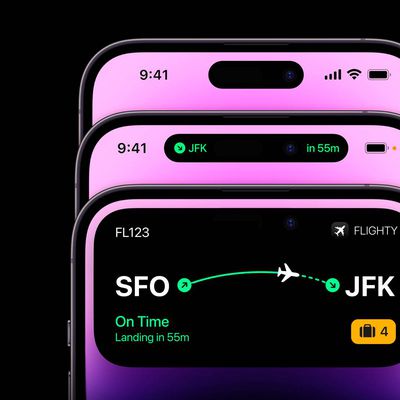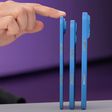Google today announced the launch of Cardboard Camera for iOS, which lets users "capture 3D 360-degree virtual reality photos" without the need for technical VR equipment. Photos taken with the app are three-dimensional panoramas in which users can tap and drag to look around "in all directions," with sound recording the moment the photo is taken that plays back each time the image is revisited.

Cardboard Camera uses a similar photography style as panoramas in the iOS camera app: users simply hold their iPhone vertically, tap the record button, then rotate slowly in place to capture their surroundings. Users will also be able to share albums filled with VR photos directly within the app by generating links to email, text message, or share on social media.
Whether you’re hiking on the Olympic Peninsula or attending your cousin’s wedding, go beyond the flat photo or selfie. With Cardboard Camera—now available on iOS as well as Android—you can capture 3D 360-degree virtual reality photos. Just like Google Cardboard, it works with the phone you already have with you.
The company said that if any of the VR photos taken with Cardboard Camera are viewed on Google Cardboard, anyone "can relive those moments as if they were there." Previously, Cardboard Camera was available on Android, with more than 5 million photos captured on the platform.
On iOS, users can download Cardboard Camera on the App Store for free. [Direct Link]






















Top Rated Comments
It should be a feature of standard Camera/Photos apps.
Sadly, just before releasing all the great touch-enabled iOS tech that would be perfect for QTVR, Apple killed it off/let it die. (Key personnel left and joined Google, from what I can recall)
I still wish Apple had continued QTVR development, and included basic QTVR tools with iPhoto/Photos, and Pro-level QTVR features in Aperture.
Sigh.
I still have all my old QTVR gear and SW...
apple.com/feedback
Also..... You can just save it to your camera roll.... but if you want to share it as a continuously connected spinning panorama, it gets uploaded to god knows where Google servers to be kept by them for eternity, with no option to allow you to delete it.
So in typical Google fashion, they're data mining the hell out of you.
Deleted
For those asking above about the "3D": To explain a bit, (i think using the highest level terms?) it's using a photogrammetric process to pull depth as you rotate.
The way it works with more obvious apps is that you "move the camera all around" and it captures something with 3d depth, like a face or an object sitting on a table. There's a bunch of iOS apps that do this right now, and let you spin around the "object" in limited 3D afterwards while viewing.
With this, there's subtle variations in the distances between objects as you rotate, in relation to what the lens is capturing. Those small differences get calculated into depth data, and it uses that to simulate a 3D image. It look like it get tripped up on really complicated plant life or other super close/detailed things that are moving (like waves), but for what it's worth, it works pretty damned well and gives an impressive result.
If you view a scene with a cardboard, try closing one eye and then the other on some of the more obvious "3D" objects. You'll notice slight differences – one object overlapping another slightly more in one than the other. That's where the depth is created.